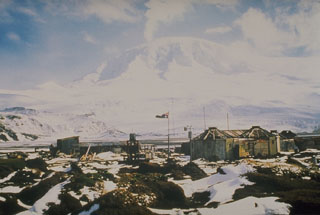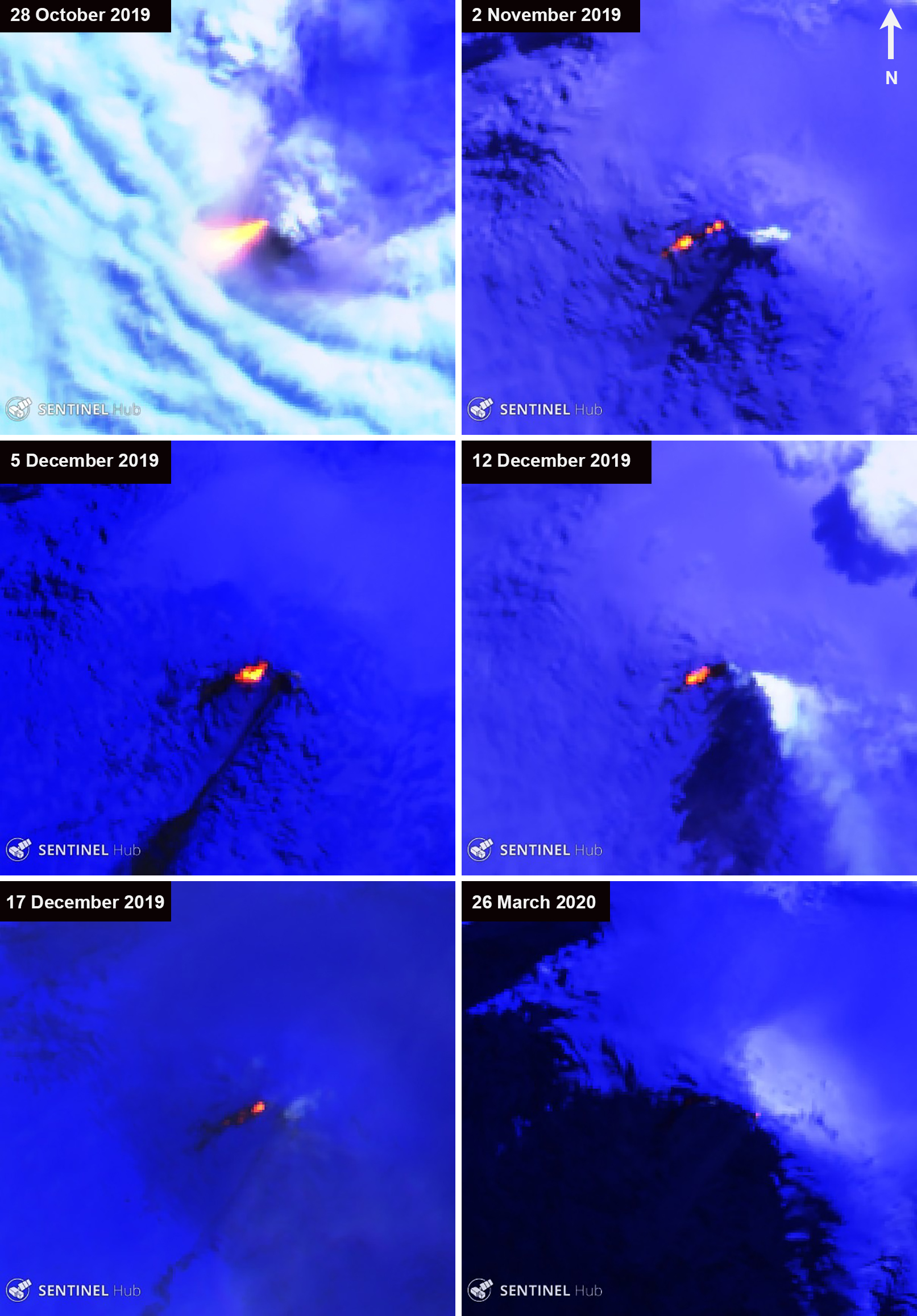Report on Heard (Australia) — May 2020
Bulletin of the Global Volcanism Network, vol. 45, no. 5 (May 2020)
Managing Editor: Edward Venzke.
Edited by Kadie L. Bennis.
Heard (Australia) Eruptive activity including a lava flow during October 2019-April 2020
Please cite this report as:
Global Volcanism Program, 2020. Report on Heard (Australia) (Bennis, K.L., and Venzke, E., eds.). Bulletin of the Global Volcanism Network, 45:5. Smithsonian Institution. https://doi.org/10.5479/si.GVP.BGVN202005-234010
Heard
Australia
53.106°S, 73.513°E; summit elev. 2745 m
All times are local (unless otherwise noted)
Heard Island is located on the Kerguelen Plateau in the southern Indian Ocean and contains Big Ben, a snow-covered stratovolcano with intermittent volcanism reported since 1910. Due to its remote location, visual observations are rare; therefore, thermal anomalies and hotspots detected by satellite-based instruments are the primary source of information. This report updates activity from October 2019 to April 2020.
MIROVA (Middle InfraRed Observation of Volcanic Activity) analysis of MODIS satellite data showed three prominent periods of strong thermal anomaly activity during this reporting period: late October 2019, December 2019, and the end of April 2020 (figure 41). These thermal anomalies were relatively strong and occurred within 5 km of the summit. Similarly, the MODVOLC algorithm reported a total of six thermal hotspots during 28 October, 1 November 2019, and 26 April 2020.
Six thermal satellite images ranging from late October 2019 to late March showed evidence of active lava at the summit (figure 42). These images show hot material, possibly a lava flow, extending SW from the summit; a hotspot also remained at the summit. Cloud cover was pervasive during the majority of this reporting period, especially in April 2020, though gas-and-steam emissions were visible on 25 April through the clouds.
Geological Summary. Heard Island on the Kerguelen Plateau in the southern Indian Ocean consists primarily of the emergent portion of two volcanic structures. The large glacier-covered composite basaltic-to-trachytic cone of Big Ben comprises most of the island, and the smaller Mt. Dixon lies at the NW tip of the island across a narrow isthmus. Little is known about the structure of Big Ben because of its extensive ice cover. The active Mawson Peak forms the island's high point and lies within a 5-6 km wide caldera breached to the SW side of Big Ben. Small satellitic scoria cones are mostly located on the northern coast. Several subglacial eruptions have been reported at this isolated volcano, but observations are infrequent and additional activity may have occurred.
Information Contacts: MIROVA (Middle InfraRed Observation of Volcanic Activity), a collaborative project between the Universities of Turin and Florence (Italy) supported by the Centre for Volcanic Risk of the Italian Civil Protection Department (URL: http://www.mirovaweb.it/); Hawai'i Institute of Geophysics and Planetology (HIGP) - MODVOLC Thermal Alerts System, School of Ocean and Earth Science and Technology (SOEST), Univ. of Hawai'i, 2525 Correa Road, Honolulu, HI 96822, USA (URL: http://modis.higp.hawaii.edu/); Sentinel Hub Playground (URL: https://www.sentinel-hub.com/explore/sentinel-playground).



